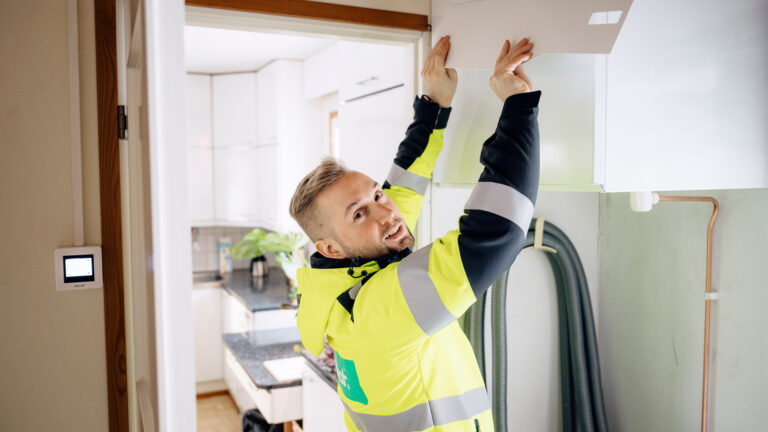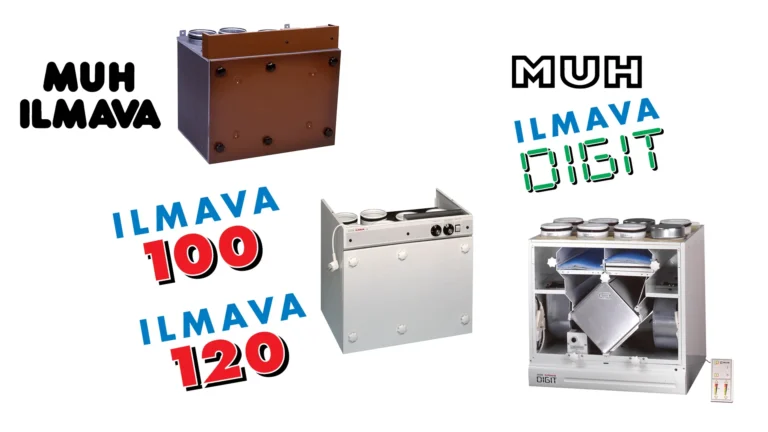Checklist for upgrading your ventilation system and selecting the right ventilation unit model

Vallox 125 MV can replace dozens of old ventilation unit models without any changes or with only minor changes to the duct system.
This makes upgrading your ventilation unit is easier than ever. However, replacing a ventilation unit still requires a little bit more consideration than replacing a refrigerator or a washing machine. When replacing a ventilation unit, you should check the condition of the duct system and the insulation and make sure the ventilation system complies with a plan drawn up by an HVAC professional.
This article gives you tips for upgrading your ventilation system and selecting the right Vallox 125 MV model for your needs.
Ensure adequate air volumes
You may use the air volumes of the old unit as a starting point, but you should also check a few things:
- Were the air volumes of the old unit correctly designed? For instance, in the 1980s, the unit and/or ducts could be undersized, particularly with respect to today’s needs.
- Have extensions been built to the house or have wet rooms been added, making the air volumes of the old unit are insufficient?
- Keep in mind that if only the ventilation unit is replaced, there is no obligation to fulfil the current air volume guidelines. If work subject to a building permit is carried out in connection with the upgrade, it is possible that the ventilation system must also meet the current requirements.
- To determine the suitable air volumes, it is advisable to use the services of a ventilation professional. Remember that a professional must readjust the air volumes also after the replacement of the ventilation unit.
Check the duct outlets and the dimensions of the frame of the unit
- Check the handedness of the unit (L/R), the number of duct outlets as well as the diameter and locations of the ducts in the unit’s duct outlet, i.e. the ceiling part. Compare them to the dimensional drawings in the replacement table.
- If the old unit has outlet collars with rubber seal rings (male), a duct connector is needed for the duct outlets to connect the ducts to the unit.
- Duct connectors are also needed for connecting the ceiling mounting plate to the ducts.
- The external dimensions of the new unit may differ from those of the old one. Ensure that there is enough room for installation!
- Check whether the vertical space allows the use of a ceiling mounting plate that makes the installation easier.
- You should also leave enough room around the unit for maintenance procedures, such as filter replacement and removal of the heat recovery cell for cleaning.
Improve the insulation and sound attenuation of the ducts if necessary
Even if the duct outlets matched the duct outlets of the new unit perfectly, it is advisable to also check the condition of the insulation of the duct when replacing the unit:
- Remember that the exhaust air duct must have condensate insulation over the entire length inside the vapour barrier.
- If the exhaust air duct is difficult to insulate, a wall-mounted air blow-out is worth considering.
When replacing a ventilation unit, consider whether you need better sound attenuation:
- If the noise from the valves is disturbing, replacing the unit will not solve the problem. Instead, silencers should be installed in the ducts or old silencers replaced with ones that dampen the noise of the new unit more efficiently.
- The DC fans of the Vallox 125 MV models have a different sound than the old AC fans, which means that different frequency bands are emphasised. The type of the silencer must correspond to the fan noise by frequency band
Replacing an old ventilation unit in a 1990s house
Supervisor Lassi Saarikko from Kangasalan Putkilämpö recommends thinking ahead as regards the purchase of a new ventilation unit: it is better that it is you, not the broken unit, who determines the time of the replacement.
“A ventilation renovation project, from dismantling the old unit to installing a new one, takes a couple of days. Vallox 125 MV is designed to fit to the duct outlets of the old units. Therefore, there is very little need to adjust the ducts when installing the new unit.”

Also take other differences into account
- Thanks to their outstanding efficiency, new ventilation units condense significantly more water than older models. Therefore, the condensing water must be led into the drain.
- The Vallox 125 MV unit has no liquid circulation post-heating radiator, as modern heat recovery cells heat the supply air efficiently enough, so that post-heating is not needed, except during the coldest hours of the year.
- Vallox 125 MV does not have a pre-heating/cooling radiator that could be connected to the geothermal heat collection circuit (cf. Digit 2 MLV), but it can be used to control a separate Vallox MLV duct radiator.
- If a so-called circulating air duct has been connected to an old ventilation unit (from above the fireplace, for instance), it must be plugged or connected to the supply air duct.
- A MyVallox control panel is included in the delivery of the Vallox 125 MV unit. A NOMAK cable must be installed between the control panel and the unit.
- The Vallox 125 MV unit can also be controlled with a cooker hood (Vallox X-Line PTXP MC, Vallox X-Line PTXPA MC or Vallox Delico PTD EC), in which case air exits the cooker hood through the ventilation unit. In connection with the replacement of the ventilation unit, it is also possible to install a separate cooker hood that will remove cooking smells more efficiently directly out of the apartment. In this case, a general extraction valve must be installed in the kitchen.
MUH Ilmava – the best-seller of its time
The manufacture of the best-selling MUH Ilmava ventilation units began at Valmet’s factory in Loimaa in late 1983. With minor modifications, Ilmava units were in production until the 2000s with over 70,000 units sold in.
Vallox 125A MV ventilation units have been designed and manufactured at the same factory as MUH Ilmava and the subsequent Ilmava models. An MUH Ilmava unit can be replaced with a Vallox 125A MV unit without an adapter, as the units have six identical duct outlets.
